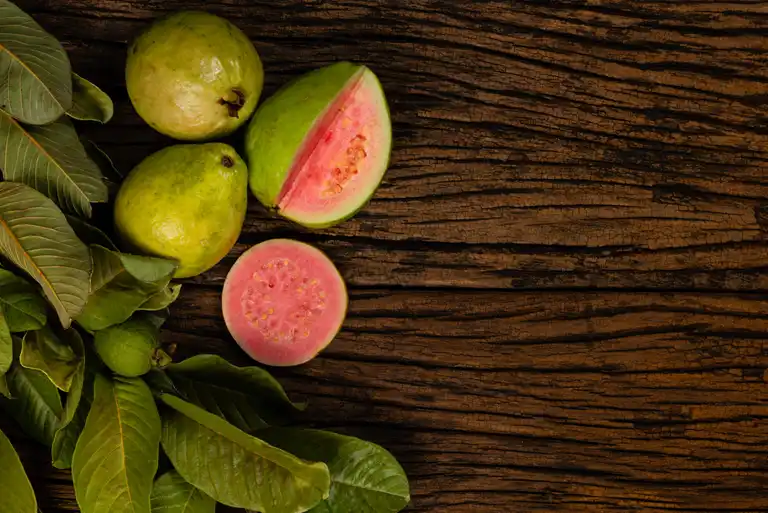Say Goodbye to Excessive Vaginal Discharge with These 7 Home Remedies

Vaginal discharge plays a very important role in a woman’s private parts because it has healthy bacteria that helps prevent bacterial or yeast infections. However, if there’s excessive vaginal discharge, it may be a problem. Normal discharge has a clear or whitish color which, although uncomfortable for some, indicates that the pH is at stable levels.
There are women with abundant vaginal discharge, which is normal, and is called physiological leukorrhea, which is not a sign of any alteration. Normal vaginal discharge can be altered for various reasons, not necessarily due to bacterial conditions or mycoses. For most women, they may go unnoticed and include things such as: taking antihistamines, lactation, menopause, diabetes, or cancer. Before applying any type of vaginal wash, it’s necessary to consult the gynecologist and it’s she or he who will indicate what’s most appropriate depending on the case.
The problem is that vaginal discharge often has changes in its texture, color, and odor, which indicate the presence and growth of harmful germs. This situation gives rise to uncomfortable infections that, in addition to pain, can affect a woman’s sexual life and self-esteem. The good news is that there are several natural solutions whose properties regulate the vaginal flora to control excessive discharge production. Here, we want to share 7 good options that you can try when you notice a change in your secretions.
1. Natural yogurt for vaginal discharge
Plain yogurt contains live cultures similar to those found in vaginal flora. That’s why it’s an effective solution against infections that increase the production of discharge. Its probiotics act directly on the infectious agents. Thus, they inhibit their growth and restore your vagina’s natural balance.
However, there is no scientific evidence to support this claim.
Do you want to know more? Read: 8 Foods Necessary For Good Vaginal Health
2. Calendula infusion

The anti-inflammatory and antibiotic properties of calendula flowers can be used as an alternative remedy for infections that produce bad odor, irritation, and abundant discharge. Its compounds don’t irritate the vagina’s delicate skin and reduce redness and itchiness.
How to use it?
- Prepare a concentrated calendula flower infusion, let cool, and use the liquid to wash your intimate area twice a day.
3. Sage infusion
Sage has antifungal properties that have been shown to be combative against candidiasis, as confirmed by this study carried out by St. Luke’s University Health Network (United States). An infusion prepared with its leaves refreshes irritated skin and reduces fungal and bacterial infection.
How to use it?
- Make a liter of sage infusion and use the liquid to rinse your intimate area.
- Repeat the treatment twice a day until you feel relief.
4. Garlic infusion
As stated in this study published in the Cuban Journal of Physical Medicine and Rehabilitation, some components of garlic have marked antimicrobial activity.
How to use it?
- First, crush 2 or 3 garlic cloves in a mortar. Then, put them in a liter of boiling water for 15 minutes.
- Once this time has passed, drain the infusion.
- Then, let it cool and use this liquid to wash the affected area.
- Repeat this process every night for a week.
5. Apple cider vinegar
The natural acids contained in apple cider vinegar help fight harmful microorganisms. On the other hand, its antifungal and antimicrobial properties facilitate the control of bad odors and secretions caused by fungi, as confirmed by this study carried out by Middlesex University in the United Kingdom.
Visit this article: The Health Benefits of Water with a Tablespoon of Apple Cider Vinegar
How to use it?
- First, dilute half a cup of apple cider vinegar in your bath water.
- Then, take a bath inside this water and wash your intimate area with it.
- Do this treatment twice a day for at least a week.
6. Baking soda
Finally, the organic compounds in baking soda help stop excessive vaginal discharge and eliminate bad odors. These help restore the pH of the vaginal area and promote the production of healthy bacteria to create a protective barrier against fungi and harmful germs, as confirmed by this study carried out by the University Hospital Center of Strasbourg (France).
Ingredients
- 1 teaspoon of baking soda (5 g)
- 1 glass of water (200 ml)
How to use it?
- First, mix one teaspoon of baking soda in a glass of water and drink it once a day.
- Repeat the treatment for a week or until you feel relief.
7. Guava infusion

Guava (Psidium guajava L.) is a plant native to Mesoamerica, and its benefits have spread to the world. It has antiseptic, antifungal, and antibacterial properties, so it acts in cases of trichomoniasis and candidiasis. It would even help treat vaginal itching, irritation, and inflammation.
Ingredients
- 2 fresh guava leaves
- Water (250ml)
How to use it?
- Heat the water with the leaves.
- Count 10 minutes from the boiling point.
- After this time, let stand for 5 minutes.
- Consume in moderation.
In conclusion, there are several natural options to control excessive vaginal discharge. In addition to other symptoms of intimate infections. Choose the remedy that most appeals to you and try it as long as your doctor has allowed it.
Also remember that douching and topical applications at home can be very dangerous, according to this research conducted by the University of Washington. Before anything, make sure to consult with your gynecologist about what is best for you.
All cited sources were thoroughly reviewed by our team to ensure their quality, reliability, currency, and validity. The bibliography of this article was considered reliable and of academic or scientific accuracy.
- Andriani, D., & Mahundingan, R. O. . (2023). Combination of administration of Pipper Betle and Curcuma Longa against Albus Fluor in adolescent girls in Tambak Mayor North Surabaya City. Journal of Vocational Nursing, 4(2), 168-173. https://e-journal.unair.ac.id/JoViN/article/view/48870
- Barad, D. H. (Septiembre de 2022). Vaginal Discharge. MSD Manual. https://www.msdmanuals.com/home/women-s-health-issues/symptoms-of-gynecologic-disorders/vaginal-discharge
- Bekut, M., Brkić, S., Kladar, N., Gavarić, N., & Božin, B. (2018). Garlic clove applied as vaginal suppository – A case report. Complementary Therapies in Medicine, 39, 97-100. https://www.sciencedirect.com/science/article/abs/pii/S0965229918301225
- Dirrahayu, E., Ramadhanti, I. P., Rahmadheny, S., & Lubis, K. (2021). Aloe Vera Gel (Aloe Barbadensisi Miller) Alleviate Pathologic Vaginal Discharge.
Advances in Health Sciences Research, 39. https://www.atlantis-press.com/proceedings/sesicnimph-21/125962119 - Di Vito, M., Fracchiolla, G., Mattarelli, P., Modesto, M., Tamburro, A., Padula, F., Agatensi, L., Giorlandino, F. R., Girolamo, A., Carbonara, G. G., Carrieri, A., Corbo, F., & Mondello, F. (2016). Probiotic and Tea Tree Oil Treatments Improve Therapy of Vaginal Candidiasis: A Preliminary Clinical Study. Medical Journal of Obstetrics and Gynecology, 4(4), 1090. https://www.jscimedcentral.com/jounal-article-info/Medical-Journal-of-Obstetrics-and-Gynecology/Probiotic-and-Tea-Tree-Oil–Treatments-Improve-Therapy–of-Vaginal-Candidiasis:-A–Preliminary-Clinical-Study-6348
- Fatima, D. (2020). The Role of Herbal Medicines in Female Genital Infections. The Role of Phytoconstitutents in Health Care. Apple Academic Press. https://www.taylorfrancis.com/chapters/edit/10.1201/9780429284267-4/role-herbal-medicines-female-genital-infections-djadouni-fatima
- Hildebrand, J. P., & Kansagor, A. T. (14 de noviembre de 2022). Vaginitis. StatPearls (Internet). Treasure Island (FL): StatPearls Publishing. https://www.ncbi.nlm.nih.gov/books/NBK470302/
- Jeanmonod, R., Chippa, V., & Jeanmonod, D. (3 de febrero de 2024). Vaginal Candidiasis. StatPearls (Internet). Treasure Island (FL): StatPearls Publishing. https://www.ncbi.nlm.nih.gov/books/NBK459317/
- Karaman, M., Bogavac, M., Radovanović, B., Sudji, J., Tešanović, K., & Janjušević, L. (2017). Origanum vulgare essential oil affects pathogens causing vaginal infections. Journal of Applied Microbiology, 122(5), 1177-1185. https://pubmed.ncbi.nlm.nih.gov/28176439/
- Laue, C., Papazova, E., Liesegang, A., Pannenbeckers, A., Arendarski, P., Linnerth, B., Domig, K. J., Kneifel, W., Petricevic, L., & Schrezenmeir, J. (2018). Effect of a yoghurt drink containing Lactobacillus strains on bacterial vaginosis in women – a double-blind, randomised, controlled clinical pilot trial. Beneficial Microbes, 9(1), 35-50. https://pubmed.ncbi.nlm.nih.gov/29065710/
- Martins, N., Ferreira, I. C., Barros, L., Silva, S., & Henriques, M. (2014). Candidiasis: predisposing factors, prevention, diagnosis and alternative treatment. Mycopathologia, 177(5-6), 223-240. https://pubmed.ncbi.nlm.nih.gov/24789109/
- Mohammadzadeh, F., Dolatian, M., Jorjani, M., Alavi Majd, H., & Borumandnia, N. (2014). Comparing the therapeutic effects of garlic tablet and oral metronidazole on bacterial vaginosis: a randomized controlled clinical trial. Iranian Red Crescent Medical Journal, 16(7), e19118. https://www.ncbi.nlm.nih.gov/pmc/articles/PMC4166107/
- Ozen, B., & Baser, M. (2017). Vaginal Candidiasis Infection Treated Using Apple Cider Vinegar: A Case Report. Alternative Therapies in Health & Medicine, 23(7), AT5751. https://pubmed.ncbi.nlm.nih.gov/29112940/
- Palma Mora, S., & Pestana Pérez, N. (2017). Diagnóstico y tratamiento de la leucorrea según la Medicina Tradicional. Medicentro Electrónica, 21(2), 139-142. http://scielo.sld.cu/scielo.php?script=sci_arttext&pid=S1029-30432017000200007
- Pirouzmand, R., Tafazoli, M., Rakhshande, H., Naseri, A., Akhlaghi, F., Shakeri, M., & Parian, M. (2020). Effect of Salvia Officinalis vaginal cream and clotrimazole vaginal cream on the Improvement of clinical signs of candida vaginitis in diabetic women. The Iranian Journal of Obstetrics, Gynecology and Infertility, 22(11), 56-65. https://ijogi.mums.ac.ir/article_14954_en.html
- Saffari, E., Mohammad-Alizadeh-Charandabi, S., Adibpour, M., Mirghafourvand, M., & Javadzadeh, Y. (2017). Comparing the effects of Calendula officinalis and clotrimazole on vaginal Candidiasis: A randomized controlled trial. Women Health, 57(10), 1145-1160. https://www.tandfonline.com/doi/abs/10.1080/03630242.2016.1263272
- Sahu, M., Pandey, S., & Bharti, S. (2016). Topical Fruit Apple of the Poor’s People (Psidium guajava L.). International Journal of Life-Sciences Scientific Research, 2(5), 548-551. https://www.semanticscholar.org/paper/Topical-Fruit-Apple-of-the-Poor%E2%80%99s-People-(Psidium-Sahu-Pandey/27e3c964d4718e6f307b5cc2477ee126a44f00b9
- Tao, Z., & Ye, A. (2023). Effectiveness of combined use of sodium bicarbonate sitz bath prescription and vaginal nystatin suppository in the treatment of patients with fungal vaginitis. Tropical Journal of Pharmaceutical Research, 22(5), 1081-1086. https://www.ajol.info/index.php/tjpr/article/view/248967
- Zelfitri Zen, P., Desmiwarti, D., & Syuku, S. (2021). Effect of Virgin Coconut Oil in The Treatment of Leucorrhea Caused by Candida Albicans Infection on Pregnant Women at Hospitals in Padang. Andalas Obstetrics and Gynecology Journal, 5(2). http://jurnalobgin.fk.unand.ac.id/index.php/JOE/article/view/235
This text is provided for informational purposes only and does not replace consultation with a professional. If in doubt, consult your specialist.








